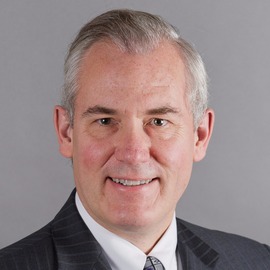
This article was paid for by a contributing third party.More Information.

ESG trends: Casting the net wide and deep

Risk management professionals are switching to the powerful economic scenario generator (ESG) from Conning, named ESG of the year. Ease of use, global adaptability and a commitment to research and development got it there, say directors Dr Matt Lightwood and Dr Hal Pedersen.
Why has the ability to calibrate economic scenario generators (ESGs) become more important to users?
Conning: Many of the new features Conning has recently developed have focused on changing regulatory requirements. With Solvency II approaching the end of its first full year post-implementation, the focus is inevitably switching to how users of internal models implement a plan of continuous improvement. There is increasing pressure on insurers to take more ownership of the underlying assumptions of the models that underpin their ESG’s technology.
Robust calibration capabilities have been important for Conning as we have developed a much wider base of users across the buy side, many of which have different requirements. A defined-benefit pension scheme in the UK might take a very different view on what is important in a model calibration compared with an asset manager in Asia or with a German life insurer. It is important to provide efficient and flexible solutions for a range of global calibration needs.

Dr Matt Lightwood, director, Conning
To support these requirements, Conning has further enhanced our easy-to-use real-world calibration tool to simultaneously specify investment targets at time zero and multiple future time horizons – as well as by multiple tenors – and to simultaneously target a wide range of statistical measures, such as mean, standard deviation, percentiles and skewness. Our users are now empowered to more easily embed their own views into the simulated distributions of the models rather than accept a vendor-provided view. These innovations have been a driving force for risk managers to switch to GEMS® models in the past 12 months. Conning has also extended this capability to include corporate, municipal and sovereign credit spreads, making our credit models even more valuable.
What are the next steps in the development of ESGs?
Conning: Conning’s team, with insight from our users, continues to keep GEMS® software at the cutting edge. In recent years we introduced pioneering features in our credit models; users can expect further developments in this area in the months ahead. interest rate modelling solutions for low interest rate environments will remain a key component of our development plans for 2017 and beyond.
Conning also plans to introduce a new user interface in 2017 that will allow for broader interpretation and sharing of results, will further enhance ease of use and will continue to augment the recalibration capabilities for GEMS® users.
What challenges do negative interest rates create for ESG providers and risk modellers?
Conning: The ultra-low and negative interest rate environment poses many

Dr Hal Pedersen, director, Conning
challenges and is fostering tremendous innovation. This environment has created major issues for life insurance companies that need to perform risk-neutral modelling for market-consistent embedded-value calculations – where achieving a good fit to the swaption-implied volatility surface and the EIOPA swap curve simultaneously challenges some models. Some models may eke out a bearable fit, but may result in exploding yields or unacceptable magnitudes and frequencies of negative yields. Conning is close to releasing an innovative next-generation risk-neutral interest rate model for these applications. Current testing shows that this new model performs significantly better in the low interest rate environment than older standard approaches – such as extensions of the Libor market model – and with far fewer limitations.
How are ESGs tailored to the specific requirements of users in different markets?
Conning: The only way to service different markets effectively is to build a broad base of models covering different asset classes and regions at different levels of granularity. For example, a large European life insurer might choose to model Greek and Italian sovereign debt using the GEMS® defaultable sovereign debt model so they get a full picture of the risk, including default and contagion between issuers. Alternatively, a specialised Lloyd’s syndicate might choose to use the GEMS® market indexes framework, which allows for the fast and simple addition of time series-based models.
Our approach to a global ESG framework carefully considers differences across regions, building both regional and asset-class specific models where appropriate. For example, our US municipal bond model incorporates credit risk and was implemented prior to the Detroit default. GEMS® users with US exposure were well prepared to understand their risks emanating from that situation. In addition, our users in Asia-Pacific provide a strong impetus for us to develop unique requirements for economies such as China within the consistent global framework of our GEMS® ESG.
GEMS® is a registered trademark of Conning, Inc. Copyright 1990–2016 Conning, Inc. All rights reserved. GEMS® software is exclusively published, licensed and owned by Conning, Inc.
Read/download the article in PDF format
Conning was named Best tech vendor for ESG in the Buy-Side Awards 2016. Read the Risk.net feature
Sponsored content
Copyright Infopro Digital Limited. All rights reserved.
As outlined in our terms and conditions, https://www.infopro-digital.com/terms-and-conditions/subscriptions/ (point 2.4), printing is limited to a single copy.
If you would like to purchase additional rights please email info@risk.net
Copyright Infopro Digital Limited. All rights reserved.
You may share this content using our article tools. As outlined in our terms and conditions, https://www.infopro-digital.com/terms-and-conditions/subscriptions/ (clause 2.4), an Authorised User may only make one copy of the materials for their own personal use. You must also comply with the restrictions in clause 2.5.
If you would like to purchase additional rights please email info@risk.net